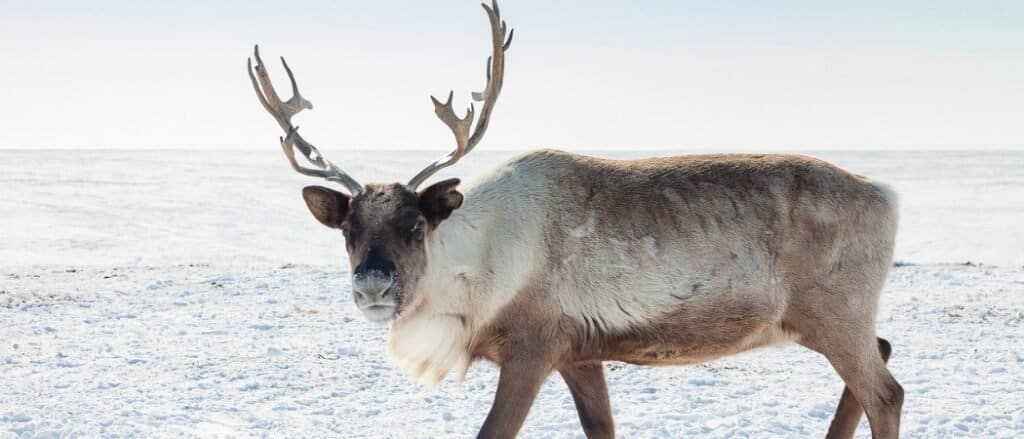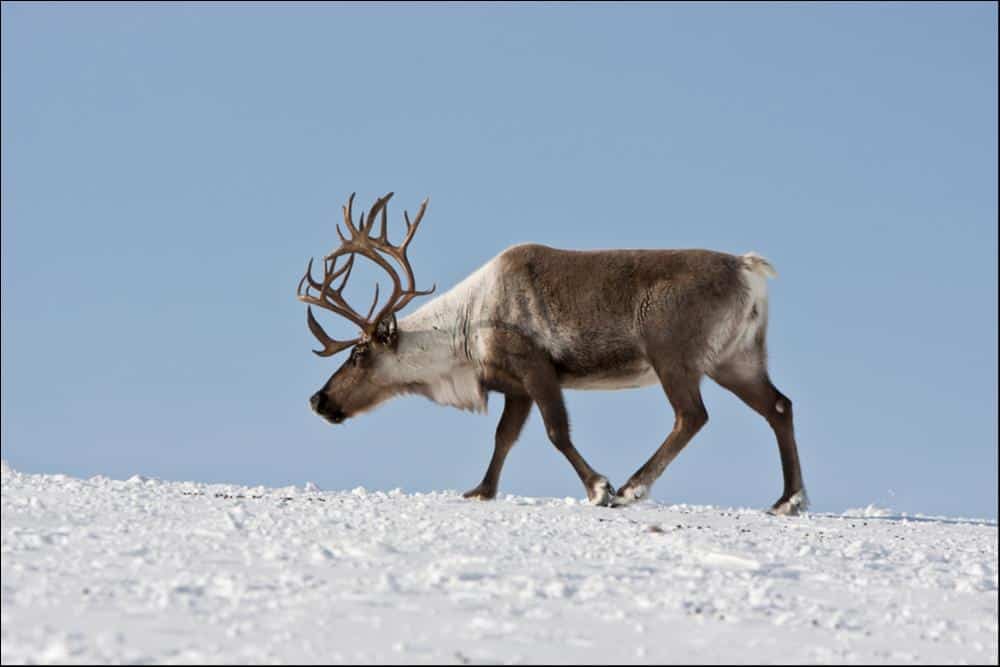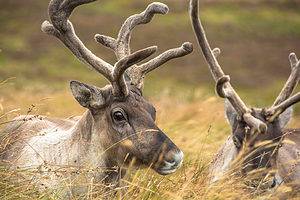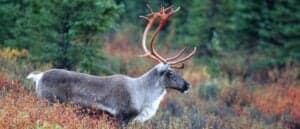While deer species aren’t known for their seasonal migrations, they are famous for their big appetites. Deer love food and will go to great lengths to eat their preferred meals. Anyone who lives near deer and has hostas planted in their backyard knows this.
Reindeer, in particular, move around a lot. In fact, they’re one of the world’s greatest migrators. Meanwhile, many hunters believe that whitetail deer, common in the American Midwest, have a home range of only one mile. While this isn’t exactly true, it serves to illustrate the point that some deer species move a lot while others don’t. Let’s delve into how far reindeer migrate for food!
How Far Do Reindeer Migrate?

Some Canadian species of reindeer cover thousands of miles, while others in Europe have far shorter movements.
©Vladimir Melnikov/Shutterstock.com
Reindeer are meandering animals. In fact, some reindeer migrate the farthest of any terrestrial animal. They trek north over 600 miles when summer begins and then move south again for winter. They have covered as much as 3000 miles total.
When females give birth, they carefully choose the place where they’ll have their calf. Researchers have noted that this is why herds follow a female during their seasonal migrations. Some Canadian species of reindeer cover thousands of miles, while others in Europe have far shorter movements. Interestingly, even island species make regional treks.
All in all, the distances they cover are pretty impressive, especially when you consider that reindeer need an average of five kg of food every day to thrive.
Why Do Reindeer Migrate?

Reindeer spend winters in the forest down south, and when the snow stops falling, they commence the great migration north.
©iStock.com/Artpilot
Reindeer live in the northernmost parts of the world, where winter temperatures drop to -40 degrees. These arctic climates make it a necessity for the reindeer to migrate if they want to survive. They may be able to survive the cold, but their food cannot.
Essentially, they’ve evolved to instinctually migrate when summer arrives, and winter begins or vice versa. They spend the winters in the forest down south, and when the snow stops falling, they commence the great migration north. Herds of up to 400.000 animals conjugate and move towards their destinations.
Interestingly, reindeer have regions that they visit to give birth every year. A bit like salmon, they revisit this same place every migration they complete. This makes their paths somewhat predictable, although general reindeer populations don’t move more than necessary.
Facts About Reindeer Migration

Reindeer migrate an average of 12 to 34 miles per day.
©iStock.com/Sergey_Krasnoshchokov
One of the primary motivators of reindeer treks is the lack of food that comes with winter. During summers, they migrate to the northernmost parts of the world, which usually feature plains. There, they feed primarily on grass, mushrooms, and other plants. However, when winter approaches, they begin their migration south and start relying more on lichen, a complex organism made of a fungus and a colony of cyanobacteria. Essentially, the bacteria live among the mycelial network of the fungus, which is a bit like the roots of a plant.
Moreover, reindeer migrate an average of 12 to 34 miles per day and can run at speeds of up to 50 mph, even when they weigh up to 300 kg. These powerhouses of energy have become well-known in many countries, like Canada.
Oddly, reindeer don’t migrate at an established date. It’s wholly impossible to predict when they’ll start moving, as even the latest research hasn’t figured out all the reasons for their migration. The length of days, which shorten in winter and lengthen in summer, is one factor. However, the depth of snow, amounts of rain, and other weather patterns also influence their movements.
Climate change is also a factor, as along with it and other human-caused changes, deer have developed more sedentary lifestyles. Wind farms, roads, dams, electrical posts, and other things have disrupted the species’ migration patterns. However, they’re in no danger, as according to the Encyclopedia Britannica, there are over 3.5 million caribou left in North America, another three million in Northern Europe, and about a million in Eurasia.
Up Next:
The photo featured at the top of this post is © Pav-Pro Photography Ltd/Shutterstock.com
Sources
- The conversation, Available here: https://theconversation.com/reindeer-ancient-migration-routes-disrupted-by-roads-dams-and-now-wind-farms-153941
- National Geographic, Available here: https://www.nationalgeographic.com/animals/mammals/facts/caribou
- Britannica, Available here: https://www.britannica.com/animal/reindeer
- Archive.org, Available here: https://archive.org/stream/romanceofnewfoun00dugm/romanceofnewfoun00dugm_djvu.txt
Thank you for reading! Have some feedback for us? Contact the AZ Animals editorial team.






